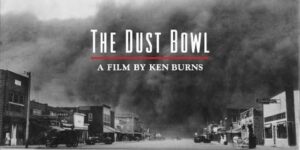By JOHN KANELIS / johnkanelis_92@hotmail.com
I have just about finished reading a book it took me far longer than I thought it would take to read.
The book is titled “The Worst Hard Time.” It was written by a stellar New York Times reporter, Timothy Egan, who chronicled in astonishing detail the suffering that came to the Texas Panhandle during the 1930s.
The Dust Bowl plundered the landscape made vulnerable by farming techniques that destroyed the native grasslands that kept the soil in place, preventing wind erosion. The Dust Bowl has been labeled the “worst manmade disaster in U.S. history.”
“The Worst Hard Time” tells story after story of how these sturdy residents of places like Dalhart, Perryton and, yes, Amarillo weathered the astonishing misery of that era. Black Sunday is still thought to be the most nightmarish scenario anyone ever saw, as enormous, towering clouds of dust blew in over the region.
Just how bad was it then? | High Plains Blogger
Children and old people died of “dust pneumonia.” Farmers lost crops. They couldn’t pay their bills. Livestock died by the tens of thousands of head.
Many of them moved away. Many others of them stayed. Their descendants live in Amarillo to this day. I got to know some of those Dust Bowl descendants during my time there. They are a remarkable lot.
For a time after I left the Amarillo Globe-News, I had the privilege of writing a blog for Panhandle PBS, the Amarillo College-affiliated TV station. They paid me to write about public affairs TV programming shown on KACV-TV in the Panhandle.
In March 2016, PBS broadcast a special called “The Dust Bowl,” which was put together by noted historian/documentary filmmaker Ken Burns. I wrote a blog post that talked about its airing.
‘Dust Bowl’ returns just as Panhandle dries out (panhandlepbs.org)
I do hope that PBS will show “The Dust Bowl” again. I want to witness the accounts of those individuals whose stories I read about in “The Worst Hard Time.”
Yes, it was a hard time. The worst of it was unimaginable to those of us who never lived through it.
Timothy Egan’s book only deepens my pride in my former neighbors and fellow travelers.
